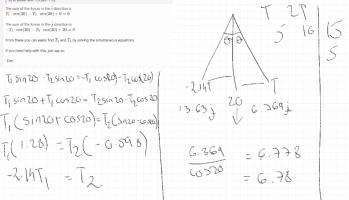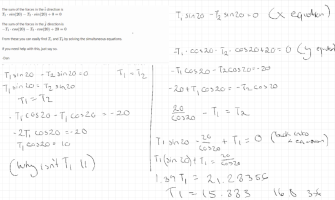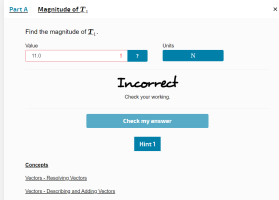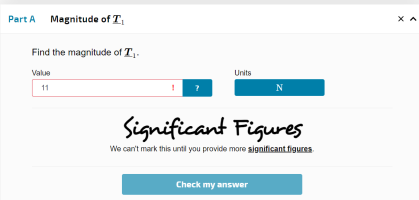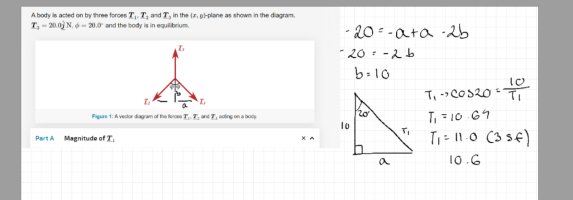I was very confused on why the answer wasn't 11 so I then thought and tried to do calculations for when T2 and T1 would be 2 different sized triangles but then realised that the x axis length of both indeed has to be the same for it to cancel out... and now I'm back to confused. I don't fully understand it because it annoys me that to find T1 or T2 I can only find magnitude which is scalar so I cant say that one plus the other = 0 with my calculations.. and then I'm confused because my only other knowledge about this is that for it to be in equilibrium the negative force can only act directly downwards,. meaning their x's cancel out and because they have the same angle their y is also identical... I then also thought of maybe forming a triangle with 2 of the sides being T1 and T2 but it doesn't give me a right angle and then I dont know what I'd do with that either? would the other line connecting them in the triangle be meaningful in any way for this? The question asks for the magnitude of T1 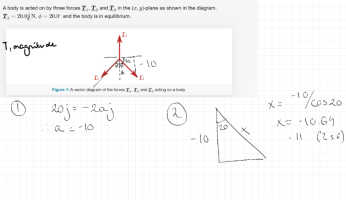 which I did try to answer with 11.0 (not -11.0)
which I did try to answer with 11.0 (not -11.0)
 which I did try to answer with 11.0 (not -11.0)
which I did try to answer with 11.0 (not -11.0)
